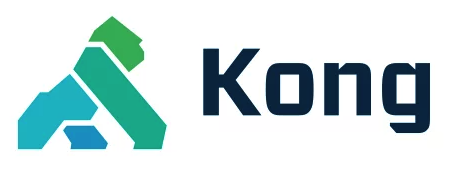You are browsing unreleased documentation.
Looking for the plugin's configuration parameters? You can find them in the OPA configuration reference doc.
Forward requests to Open Policy Agent and process the requests only if the authorization policy allows it.
Usage
Set up an OPA server
If you are not already running an OPA server, start one by following instructions on openpolicyagent.org.
Set up a dummy policy
Create an example.rego file with the following content:
package example
default allowBoolean = false
default allowDetailed = false
allowBoolean {
header_present
}
header_present {
input.request.http.headers["my-secret-header"] == "open-sesame"
}
allowDetailed = response {
header_present
response := {
"allow": true,
"headers": {
"header-from-opa": "accepted",
},
}
}
allowDetailed = response {
not header_present
response := {
"allow": false,
"status": 418,
"headers": {
"header-from-opa": "rejected",
},
}
}
This policy allows the request to pass through if it contains the HTTP header
my-secret-header with value open-sesame.
Next, configure the policy with OPA:
curl -XPUT localhost:8181/v1/policies/example --data-binary @example.rego
The above command uses OPA’s default port 8181. It could be different for your setup.
Set up Kong Gateway
Set up a Route and Service in Kong Gateway and then enable the plugin:
curl -X POST http://localhost:8001/routes/<route>/plugins \
--data "name=opa" \
--data "config.opa_path=/v1/data/example/allowBoolean" \
--data "config.opa_host=<host-where-opa is running>"
Make a request
Now, make a request to Kong Gateway:
curl http://kong:8000/{proxy_path}
You will get a 403 response from the gateway because OPA has rejected the request.
Next, make the same request providing the necessary header:
curl http://kong:8000/{proxy_path} \
-H 'my-secret-header: open-sesame'
This time you will get the response from your upstream service, as this request is allowed by OPA.
Next, update the plugin configuration to use /v1/data/example/allowDetailed as
opa_path and observe how the policy affects the response and proxied request.
OPA input structure
The input to OPA has the following JSON structure:
{
"input": {
"request": { # details about the request from client to Kong
"http": {
"host": "example.org", # host header used by the client to make the request
"port": "8000", # port to which the request was made
"tls": {}, # TLS details if the request was made on HTTPS and Kong terminated the TLS connection
"method": "GET", # HTTP method used in the request
"scheme": "http", # protocol used to make the request by the client, this can be either `http` or `https`
"path": "/foo/bar", # HTTP path used in the request
"querystring": { # Query string in the HTTP request as key-value pairs
"foo" : "bar",
"foo2" : "bar2",
},
"headers": { # HTTP headers of the request
"accept-encoding": "gzip, deflate",
"connection": "keep-alive",
"accept": "*\\/*"
},
"uri_captures": { # The regex capture groups captured on the Kong Gateway Route's path field in the current request. Injected only if `include_uri_captures_in_opa_input` is set to `true`.
"named": {},
"unnamed": []
}
}
},
"client_ip": "127.0.0.1",# client IP address as interpreted by Kong
"service": { # The Kong service resource to which this request will be forwarded to if OPA allows. Injected only if `include_service_in_opa_input` is set to `true`.
"host": "httpbin.konghq.com",
"created_at": 1612819937,
"connect_timeout": 60000,
"id": "e6fd8b19-89e5-44e6-8a2a-79e8bf3c31a5",
"protocol": "http",
"name": "foo",
"read_timeout": 60000,
"port": 80,
"updated_at": 1612819937,
"ws_id": "d6020dc4-67f5-4c62-8b45-e2f497c20f5c",
"retries": 5,
"write_timeout": 60000
},
"route": { # The Kong route that was matched for this request. Injected only if `include_route_in_opa_input` is set to `true`.
"id": "bc6d8617-76a7-441f-aa40-32eb1f5be9e6",
"paths": [
"\\/"
],
"protocols": [
"http",
"https"
],
"strip_path": true,
"created_at": 1612819949,
"ws_id": "d6020dc4-67f5-4c62-8b45-e2f497c20f5c",
"request_buffering": true,
"updated_at": 1612819949,
"preserve_host": false,
"regex_priority": 0,
"response_buffering": true,
"https_redirect_status_code": 426,
"path_handling": "v0",
"service": {
"id": "e6fd8b19-89e5-44e6-8a2a-79e8bf3c31a5"
}
},
"consumer": { # Kong consumer that was used for authentication for this request. Injected only if `include_consumer_in_opa_input` is set to `true`.
"id": "bc6d8617-76a7-431f-aa40-32eb1f5be7e6",
"username": "kong-consumer-username"
}
}
}
Note that it is possible that Consumer and Service resources are not present for any given request in Kong Gateway.
Expected response from OPA
After OPA is done executing policies, the plugin expects the policy evaluation
result in one of the defined formats: boolean or object. Any other format
or a status code other than 200 OK results in the plugin returning a
500 Internal Server Error to the client.
Boolean result
OPA can return a true or false result after a policy evaluation.
This should suffice for most use cases.
Examples:
To allow the request to be processed further, OPA should send the following response:
{
"result": true
}
To deny the request and terminate its processing, OPA should send the following response:
{
"result": false
}
Any other fields in the response in this case are ignored.
Object result
In this case, OPA returns an object instead of a boolean result. This allows for injecting custom HTTP headers as well as changing the HTTP status code for rejected requests.
The plugin expects the following structure in the OPA response in this case:
{
"result": {
"allow": <boolean>,
"status": <HTTP status code>,
"headers": {
"<key>": "<value>",
"<key2>": "<value2>"
},
"message": "<value3> or object",
}
}
The only required field in this response is result.allow, which accepts a
boolean value.
If result.allow is set to true, then the key-value pairs in result.headers (if any)
are injected into the request before it is forwarded to the upstream Service.
If result.allow is set to false, then the key-value pairs in result.headers (if any)
are injected into the response, the result.message (if any) is set as the response message,
and the status code of the response is set to result.status.
If result.status is absent then the default 403 status code is sent.
If result.status is absent, then the default unauthorized message is sent.














